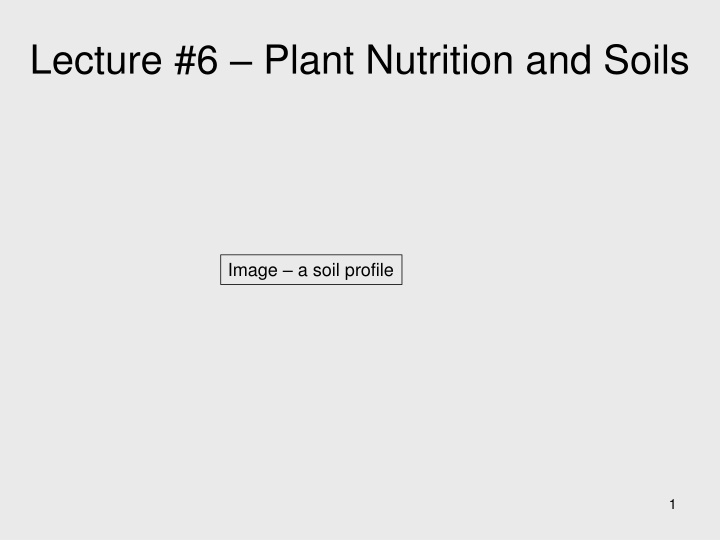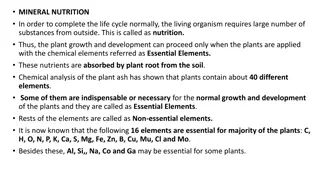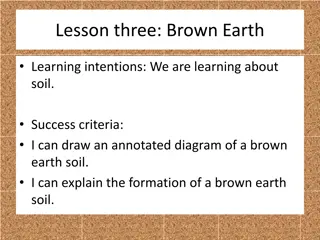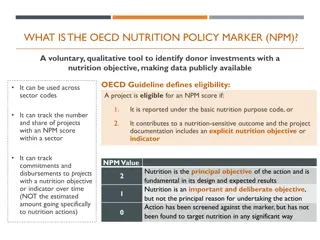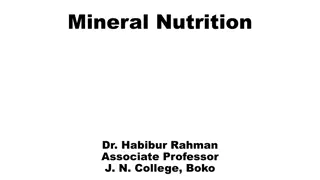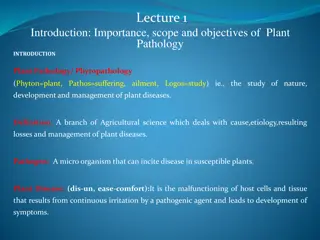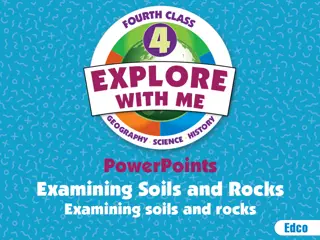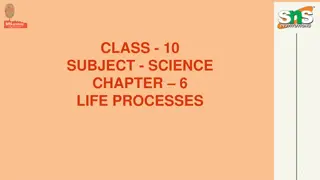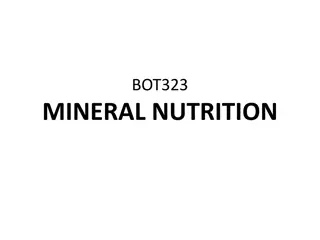Plant Nutrition and Soils: Essential Elements and Resource Requirements
Explore the essential elements required for plant growth, how plants acquire resources, the role of soils in providing nutrients, and the composition of plant tissues. Key concepts include resource acquisition methods, soil factors, and the importance of water in plant tissue. Critical thinking questions challenge assumptions about plant tissue composition.
Download Presentation

Please find below an Image/Link to download the presentation.
The content on the website is provided AS IS for your information and personal use only. It may not be sold, licensed, or shared on other websites without obtaining consent from the author.If you encounter any issues during the download, it is possible that the publisher has removed the file from their server.
You are allowed to download the files provided on this website for personal or commercial use, subject to the condition that they are used lawfully. All files are the property of their respective owners.
The content on the website is provided AS IS for your information and personal use only. It may not be sold, licensed, or shared on other websites without obtaining consent from the author.
E N D
Presentation Transcript
Lecture #6 Plant Nutrition and Soils Image a soil profile 1
Key Concepts: Resources Which are required How they are used Essential elements What they are What they do Soils and soil forming factors The rhizosphere Some alternate methods to acquire nutrients 2
Resource requirements for plant growth??? 3
Where do plants get these resources??? 4
Where do plants get these resources??? 5
Image root system of a grass Diagram plant resource requirements and sources 6
Plant tissue composition by weight: Fresh herbaceous tissue is 80-85% water Little water is incorporated into plant tissue What does water contribute to tissue??? Most water is in the cell solution, in the vacuoles, or passing through in the transpiration stream 7
Critical Thinking Does wood have such a high percentage of water??? 8
Critical Thinking Does wood have such a high percentage of water??? 9
Plant tissue composition by weight: Fresh herbaceous tissue is 80-85% water Little water is incorporated into plant tissue What does water contribute to tissue??? 10
Plant tissue composition by weight: Fresh herbaceous tissue is 80-85% water Little water is incorporated into plant tissue 11
Plant tissue composition by weight: Fresh herbaceous tissue is 80-85% water Little water is incorporated into plant tissue 12
DRY plant tissue composition by weight: 45% carbon 45% oxygen 6% hydrogen 5% inorganic mineral nutrients Each a tad under 45% 13
DRY plant tissue composition by weight: 45% carbon from ?? CO2 45% oxygen from ?? CO2 6% hydrogen from ?? water 5% inorganic mineral nutrients from ?? soil 14
DRY plant tissue composition by weight: 45% carbon from 45% oxygen from 6% hydrogen from 5% inorganic mineral nutrients from 15
DRY plant tissue composition by weight: 45% carbon from 45% oxygen from 6% hydrogen from 5% inorganic mineral nutrients from 16
C, H, O source and fate in photosynthesis Diagram what goes into photosynthesis and what comes out 17
DRY plant tissue composition by weight: 45% carbon from CO2 45% oxygen from CO2 6% hydrogen from water 5% inorganic mineral nutrients from 0.75-1% of wet weight, but many are essential to plant growth and function 18
Critical Thinking What is the difference between a chemical element, a molecule and a macromolecule??? 19
Critical Thinking What is the difference between a chemical element, a molecule and a macromolecule??? Diagram structure of chlorophyll molecule 20
Essential Elements Chemical elements Not molecules, though some are delivered in that form N vs. NO3- Required for growth and function of the plant Can t be replaced by some other element Some contribute to structural components Some contribute to metabolic processes or the maintenance of homeostasis 21
Essential elements in structural plant components: ? 22
Essential elements in structural plant components: Cellulose ?? Lignin ?? Pectin ?? Cell membranes ?? Proteins (cell membrane, cytoskeleton) ?? 23
Essential elements in structural plant components: Cellulose Lignin Pectin Cell membranes Proteins (cell membrane, cytoskeleton) 24
Essential elements for metabolic processes: ? 25
Essential elements for metabolic processes: Chlorophyll ?? Nucleic acids ?? ATP ?? Enzymes and other proteins ?? Enzyme cofactors ?? Elements that control water, charge and solute balance ?? 26
Essential elements for metabolic processes: Chlorophyll Nucleic acids ATP Enzymes and other proteins Enzyme cofactors many Elements that control water, charge and solute balance 27
Macro Nutrients vs. Micro Nutrients mass Nitrogen Potassium Calcium Magnesium Phosphorous Sulfur Chlorine, Iron, Boron, Manganese, Zinc, Copper and Molybdenum Some plants also require Nickel, Sodium, Silicon, Selenium or others All used in large quantities to support the structures and processes listed before Mostly used in enzymes, as enzyme cofactors or in electron transfers often reused, less required 28
Study table in book! Table essential nutrients, both macro and micro 29
Memory device in honor of my friend and mentor, Dr. Chuck Davey celebrated in 2006 for 50 years of service to soil science!!! C HOPKNS CaFe, Mg, Mn B CuZn Mo, Cl C. Hopkin's cafe, mighty good, managed by cousin Mo, waitress Clara Nickel may also be essential 30
Some minerals required, some by chance Images various plants that use additional elements Sulfur in mustards Silicon in horsetails 31 Uranium in macadamia nuts
Critical Thinking How do you tell which are required??? 32
Critical Thinking How do you tell which are required??? 33
Critical Thinking How do you tell which are required??? How would elements NOT required enter the plant tissue??? 34
Critical Thinking How do you tell which are required??? How would elements NOT required enter the plant tissue??? 35
All plants will exhibit signs of deficiencies.. Images signs of deficiency 36
Critical Thinking If the deficiency appears first in the older leaves, is that nutrient mobile or immobile??? 37
Critical Thinking If the deficiency appears first in the older leaves, is that nutrient mobile or immobile??? How??? 38
Critical Thinking If the deficiency appears first in the older leaves, is that nutrient mobile or immobile??? How??? 39
Fe deficiency in younger leaves (immobile) Mg deficiency in older leaves (mobile) 40
Critical Thinking Why would some elements be mobile, and others not??? 41
Critical Thinking Why would some elements be mobile, and others not??? 42
Most plants get most of their nutrients from the soil absorbed through the roots Image roots 43
Soil is not just Dirt! Soil is the skin of the earth Soil provides for virtually all our food Soil supports the forests that maintain the hydrological cycle Soil supports virtually all terrestrial ecosystems from micro-organisms to charismatic macro-fauna 44
The results of deforestation are ecological, economic and social disaster () Rosie Image erosion after tropical deforestation 45
Removing the plants removes the soils protective blanket and erosion is almost inevitable 46
Erosion from deforestation in Madagascar More images erosion 47
Sedimentation from erosion this represents a huge loss of soil capital Image sediments from eroded land flooding out to sea 48
Sediments eroding off Haiti Image sediments eroding off Haiti into the sea 49
Dominican Republic Image the political boundary is clear from the deforestation Haiti 50
